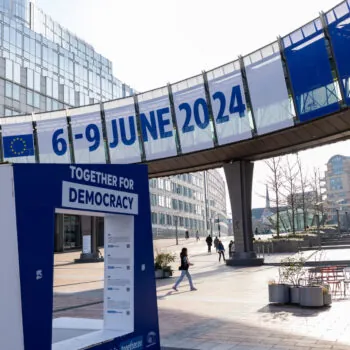Claire Perry, the Minister of State for the Department of Business, Energy and Industrial Strategy, told the House of Commons that the Government would publish its Clean Growth Plan in the Autumn.
She said that she needed to take ‘time to ensure that the draft could be extended to become more ambitious’. This announcement comes nearly a year after the Government approved the fifth carbon budget, which requires UK emissions to fall 57% below 1990 levels by 2032, and six months after the official statutory deadline to produce the document.
The task is proving easier said than done. It is true that there is a gap to close between the current emissions trajectory and the requirements of not only the fifth carbon budget but the fourth as well. It is also true that action is required to reduce emissions from heating which has proved notoriously difficult for tackle. However, there is a more fundamental issue at play.
The commonly received wisdom is that ‘green costs money’ and the only reason we are spending this money is to meet our self-imposed targets to reduce CO2 emissions. At best, this has led to a grudging acceptance that we must make the best of a bad job and get on with it. At worst, it ferments downright opposition. Should we really be spending all this money whilst other economies aren’t doing the same? And now that Trump’s pulled the plug on the Paris agreement, what’s the point?
New plans needed to address climate change
Gradually over the past few years, this narrative has eroded political will to pursue the decarbonisation agenda with vigour. The Government has been unwilling to commit lots of money to invest in renewables whilst there are other more immediate pressures on the national finances. This is despite increasingly strident warnings from climate scientists that more action is needed rather than less. Recently, our own independent climate watchdog, the Committee for Climate Change, issued a report stating ‘New plans for a new Parliament are urgently needed to address climate change risks. The UK’s transition to a resilient, low-carbon economy is in danger of being derailed by a lack of Government action’.
But just as the narrative of high cost renewables has become embedded, something quite remarkable is beginning to happen. The costs of renewables are falling, and falling fast. The Renewable Energy Network REN21 Global Status Report for 2017 reports that: ‘Costs for electricity from solar PV and wind is rapidly falling. Record-breaking tenders for solar PV occurred with bids in some markets below USD 0.03 per kilowatt-hour (kWh). Parallel developments in the wind power sector saw record low bids in several countries’. And these cost reductions are expected to continue. Indeed, those who are close to energy technology developments claim that, without question, renewables will soon be cheaper than other conventional forms of energy production.
Ray Thompson, Head of Business Development at Siemens Gamesa Renewable Energy, recently said that ‘if forecasts turn out to be correct, then the point at which offshore wind can compete with the lowest cost of new electricity plants (new build combined cycle gas at around £70-80/MWh) is surely in sight.’ And onshore wind and solar PV will inevitably be even cheaper than offshore wind.
So, presumably, the Government should be jumping for joy – they can decarbonise and reduce energy costs all in one go.
Unfortunately, it is not as simple as that. Wind and solar power produce energy in line with the availability of natural resources and not necessarily when needed by consumers. This means that the energy system must change if it is going to be able to harness cheap renewable power. In particular, it must be possible to adjust consumption patterns and store energy for the times when it is needed.
Making the most of green technology
These changes are perfectly possible from a technical perspective. New digital control and communication technologies mean that much of consumer demand can be adjusted – even in people’s homes where, for example, fridges and freezers can be turned off temporarily and washing machines, tumble dryers and dishwashers can be scheduled to operate when energy is cheap. Moreover, the costs of storage are reducing significantly, driven largely by the development of electric vehicles.
However, creating a flexible power system that can accommodate large quantities of renewables will not be easy. New markets for energy products and services need to be created and new business models developed. Whilst these might emerge naturally over time, there is no guarantee that it will happen quickly enough to take advantage of the rapid reductions in the costs of renewables. Action is needed by Government to drive forward the development of these new markets to create a modern, flexible energy system.
The prize is considerable. Those countries with flexible energy systems will be able to connect a higher proportion of cheap renewable energy, thereby reducing energy costs for citizens and businesses alike. So, instead of trying to minimise the costs of decarbonising the energy system by limiting the volume of renewable energy connecting to the system, there is a new imperative. How can we create an energy system that is sufficiently flexible to enable us to take advantage of cheap renewable power?
This question must lie at the heart of the Clean Growth Plan and the associated industrial strategy that aims to promote economic growth and create jobs. The paradigm has changed and the opportunity now exists to create an efficient, cheap and clean energy system fit for the 21st century. Let’s hope that Claire Perry is true to her word and rises to this challenge in an ambitious Clean Growth Plan.
This article was first published in Cornwall Insight's Energy Spectrum.


